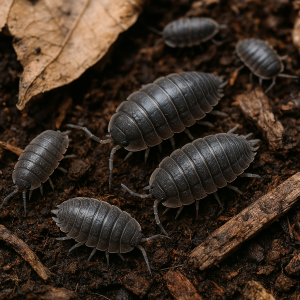 Flashy, high-maintenance pets often steal the spotlight, but isopods quietly offer something more meaningful. They’re small, slow, and not traditionally cute—but when it comes to teaching kids about ecosystems, few creatures are more effective.
Flashy, high-maintenance pets often steal the spotlight, but isopods quietly offer something more meaningful. They’re small, slow, and not traditionally cute—but when it comes to teaching kids about ecosystems, few creatures are more effective.
These humble crustaceans—often called “roly-polies” or “pill bugs”—are surprisingly powerful educators. Isopods are important in decomposition and soil health, making them ideal for demonstrating the life cycles that keep nature in balance. Their quiet habits and minimal care needs make them perfect for schools, especially when time and resources are tight. And yes, you can even find isopods for sale if your classroom is ready to adopt a few.
Nature’s Clean-Up Crew
Isopods are detritivores. That means they feed on dead and decaying organic material—leaves, wood, and even animal matter. In doing so, they help break down complex substances into simpler compounds. This process recycles nutrients back into the soil and supports plant growth.
In a classroom setting, this becomes a hands-on lesson in decomposition. Kids can add bits of leaf litter or vegetable scraps to an isopod enclosure and watch as the tiny bugs gradually break it down. Over time, students see how what was once “waste” becomes part of the soil again. It’s a powerful way to show how nothing in nature is truly thrown away—it all gets reused.
Soil Health in Real Time
Healthy soil doesn’t just happen. It relies on a network of organisms working together to aerate, fertilize, and structure the ground. Isopods contribute by tunneling and digesting organic material, which helps mix and enrich the soil.
By observing isopods in action, kids can learn how living creatures affect the ground beneath our feet. They might compare soil samples from different isopod enclosures, or measure how fast leaf litter disappears under different conditions. These small experiments can spark bigger conversations about composting, gardening, and sustainable land use.
Plus, isopods are excellent indicators of environmental balance. The population will shrink if an enclosure is too dry or lacks food. If it’s well-maintained, isopods will thrive. This makes them a natural segue into lessons about habitat needs, moisture cycles, and climate.
A Lesson in Biodiversity
There are over 10,000 known species of isopods, ranging from deep-sea dwellers to forest floor inhabitants. In the classroom, kids usually encounter terrestrial species like Armadillidium vulgare, which can roll into a ball when threatened. Others, like Porcellio scaber, don’t roll but are more active and curious.
Having a variety of isopods in the classroom can lead to discussions about adaptation and biodiversity. Why do some isopods roll up while others don’t? What kind of environment does each species prefer? These questions can launch projects about evolution, classification, and the importance of biological variety in ecosystems.
This also opens the door to empathy and environmental stewardship. When students care for these tiny animals, they often gain a deeper respect for all forms of life—especially those that usually go unnoticed. That awareness can shape how they interact with nature as they grow.
Low Stakes, High Impact
Unlike many classroom pets, isopods require very little. They need a small plastic container, some moist substrate (like coconut fiber or leaf litter), a few hiding spots, and a steady food source (vegetable scraps or dead leaves). They don’t bite, escape easily, or require daily interaction.
This makes them an excellent fit for teachers who want a living component in their science curriculum without hassle. They’re also ideal for younger students still learning to observe and handle animals gently.
Because they’re quiet and unobtrusive, isopods can be integrated into a variety of lessons without causing distraction. Kids can sketch them, write observations, build microhabitats, or study their life cycle from egg to adult.
Bringing the Lesson Home
Isopods don’t just stay in the classroom. Many students become curious about their own backyards. They start lifting rocks, turning over leaves, and looking more closely at the soil around them. That curiosity is exactly what science education aims to inspire—a drive to explore, ask questions, and connect with the world.
Teachers can encourage this by assigning simple nature journals, scavenger hunts, or citizen science projects related to soil organisms. Even a walk around the school grounds can turn into a discovery session.
Conclusion
In their quiet way, isopods are powerful teaching tools. They show kids that even the smallest creatures have a big role to play in nature. Through them, students learn about decomposition, soil health, biodiversity, and the delicate balance of ecosystems.
And maybe most importantly, they learn to notice, to slow down, and to pay attention to what’s happening just beneath the surface—whether it’s in the soil, in a terrarium, or in the larger world around them. That kind of awareness is the foundation of science, and it starts with tiny custodians like these.
